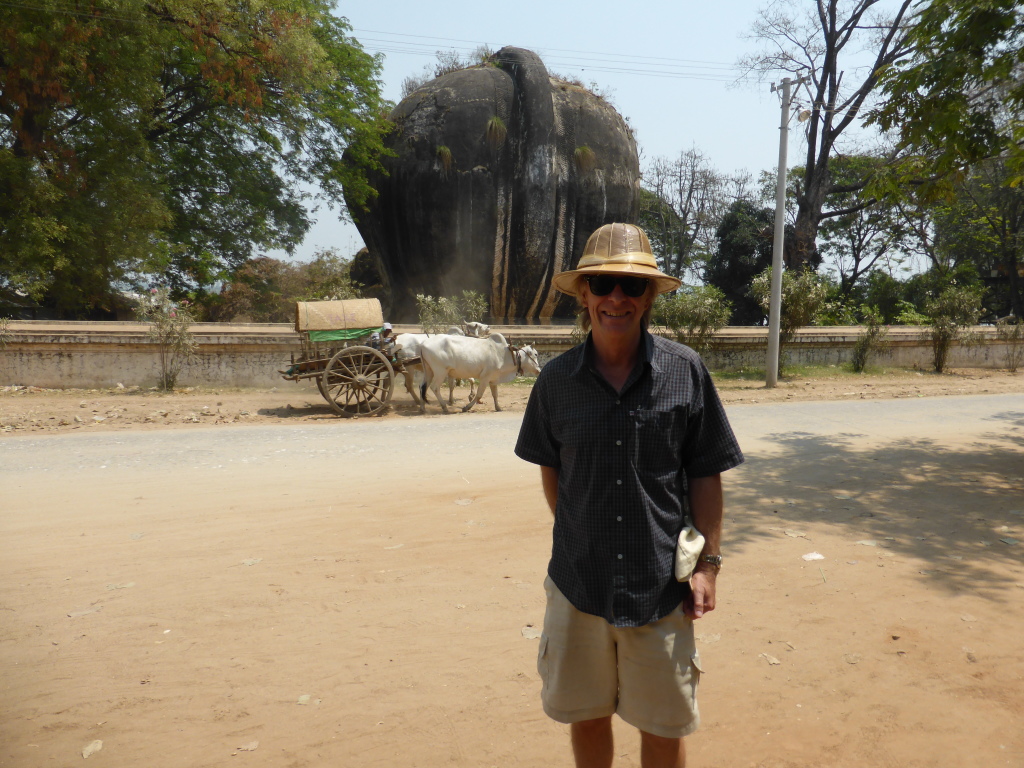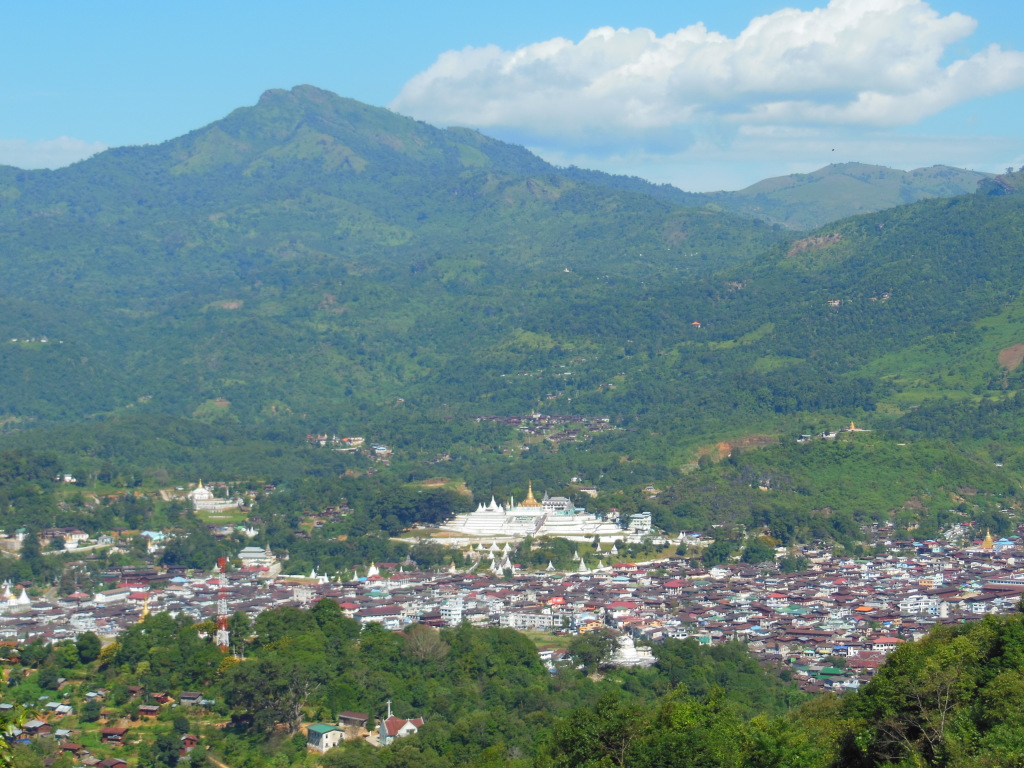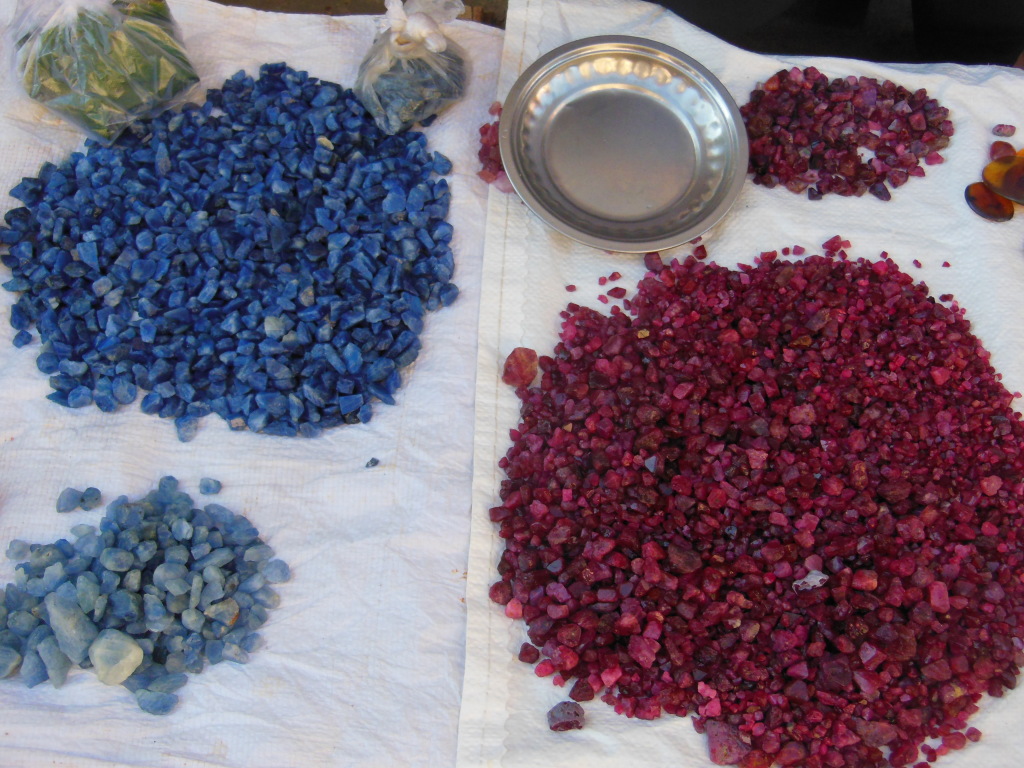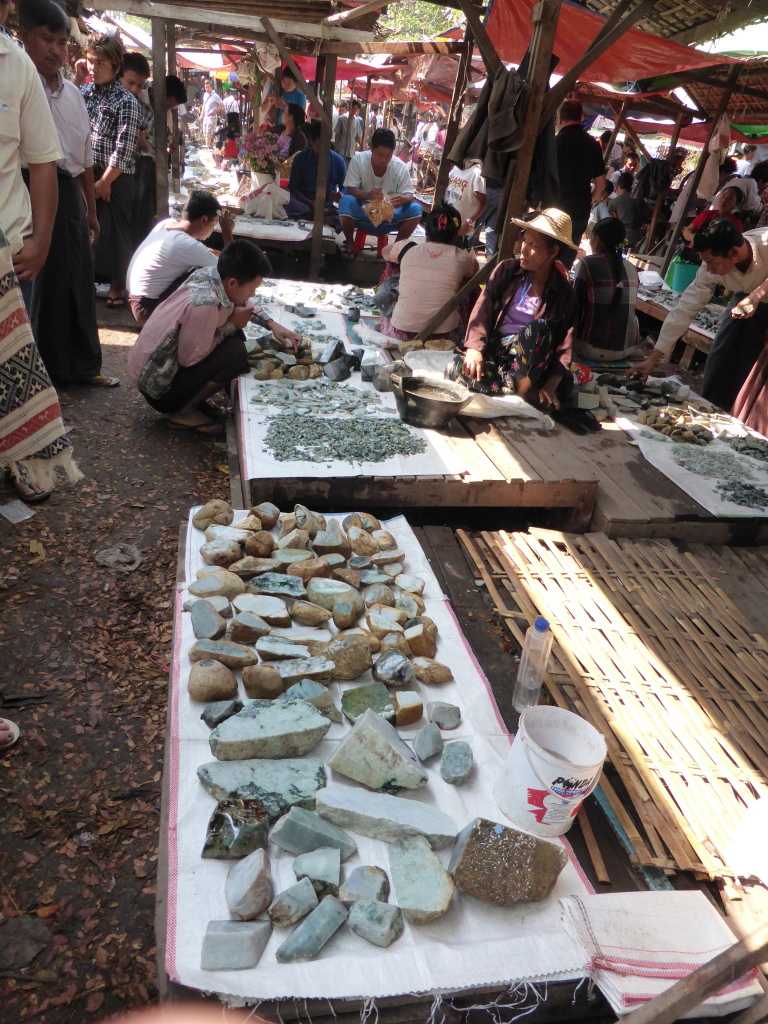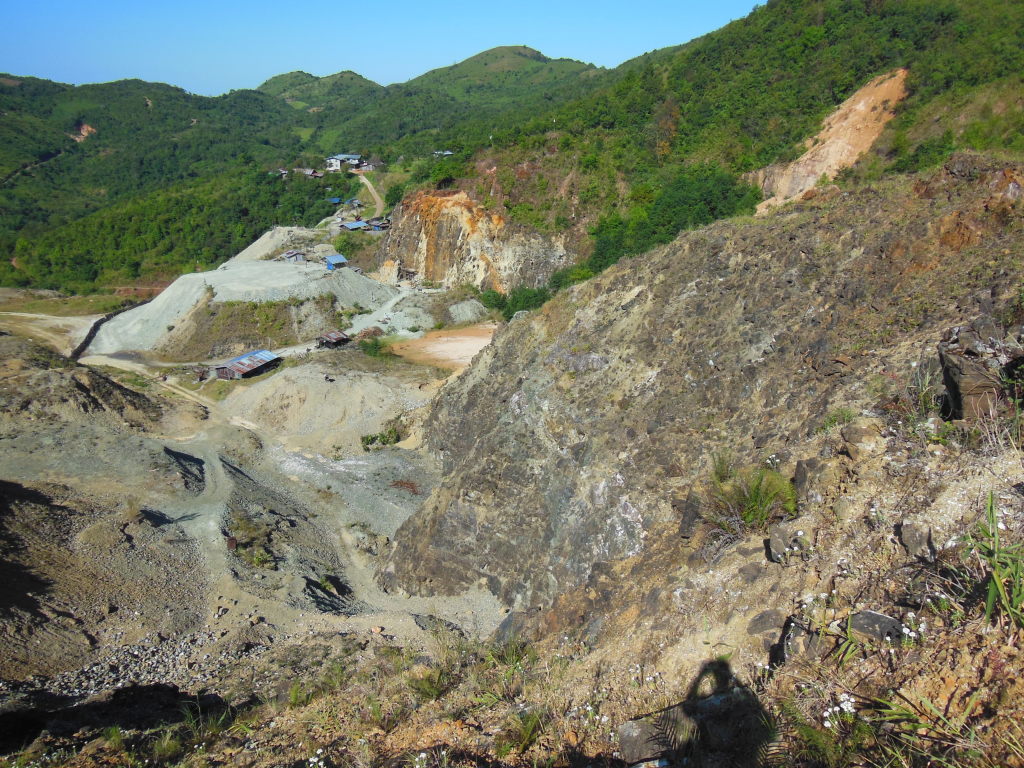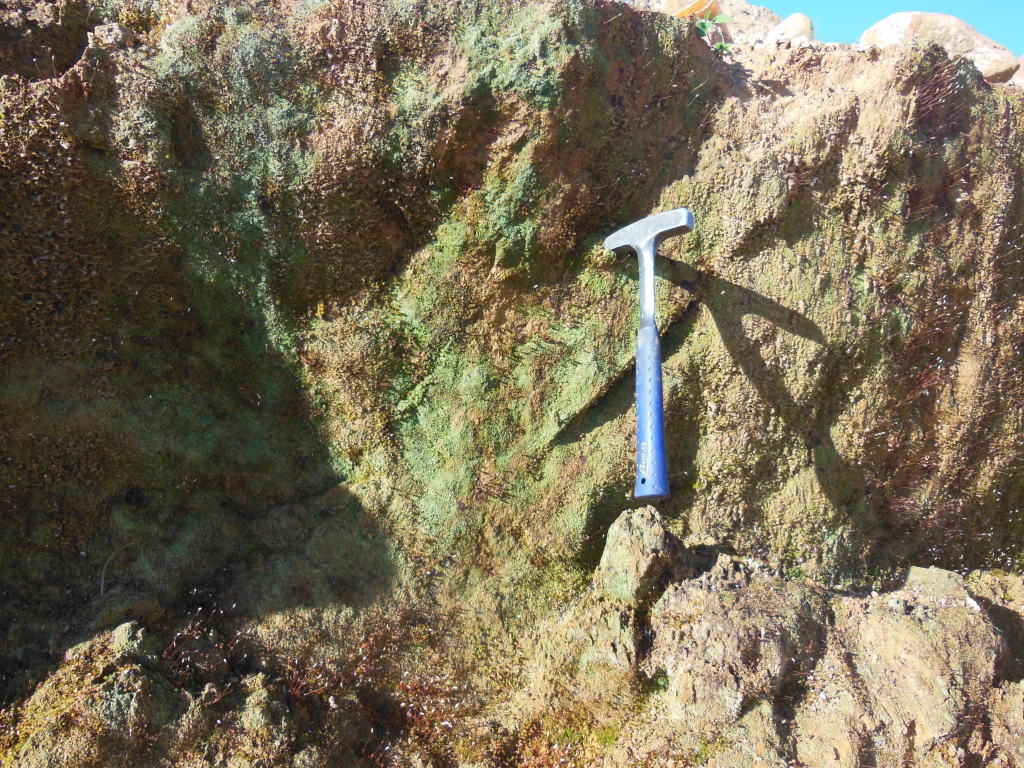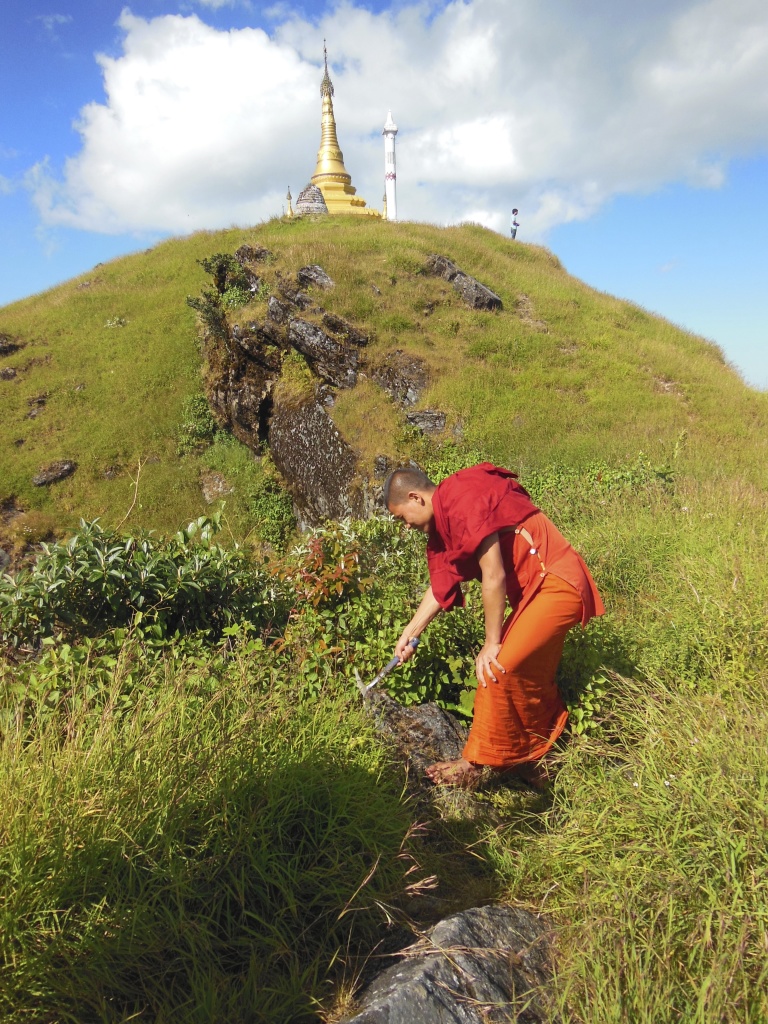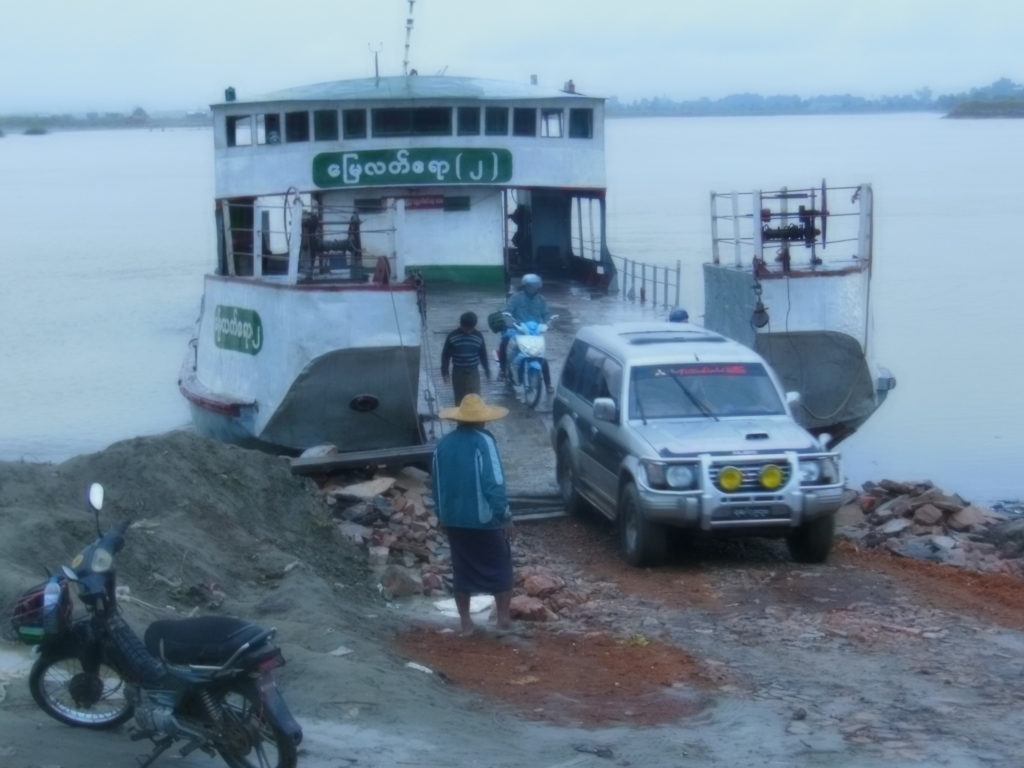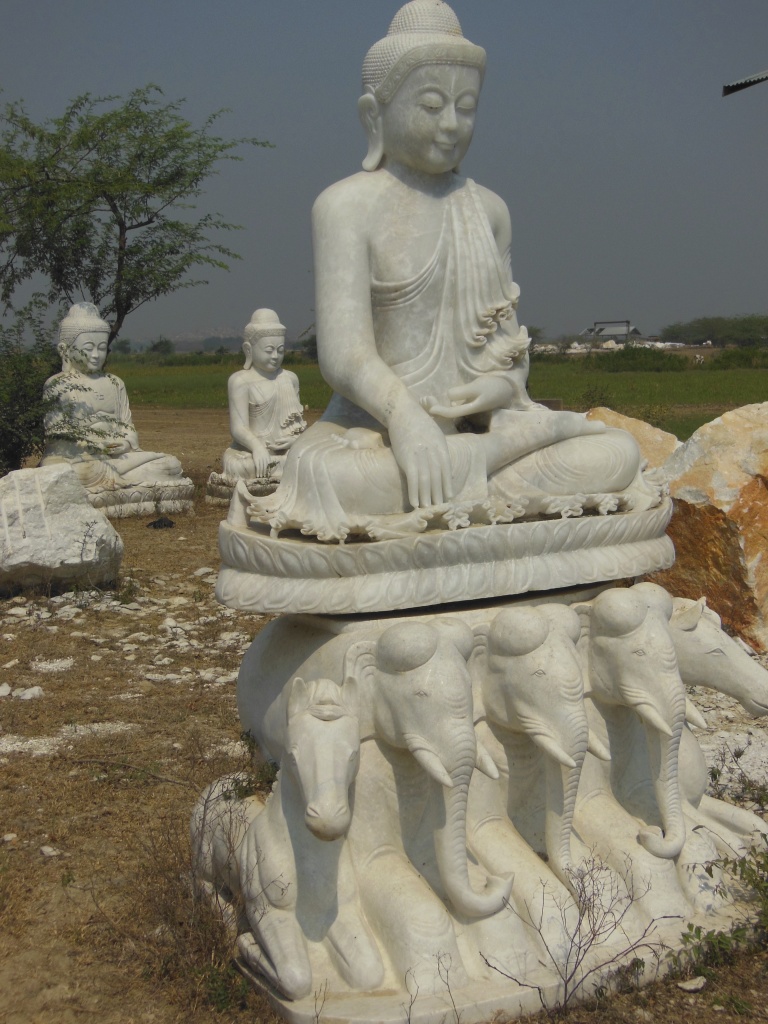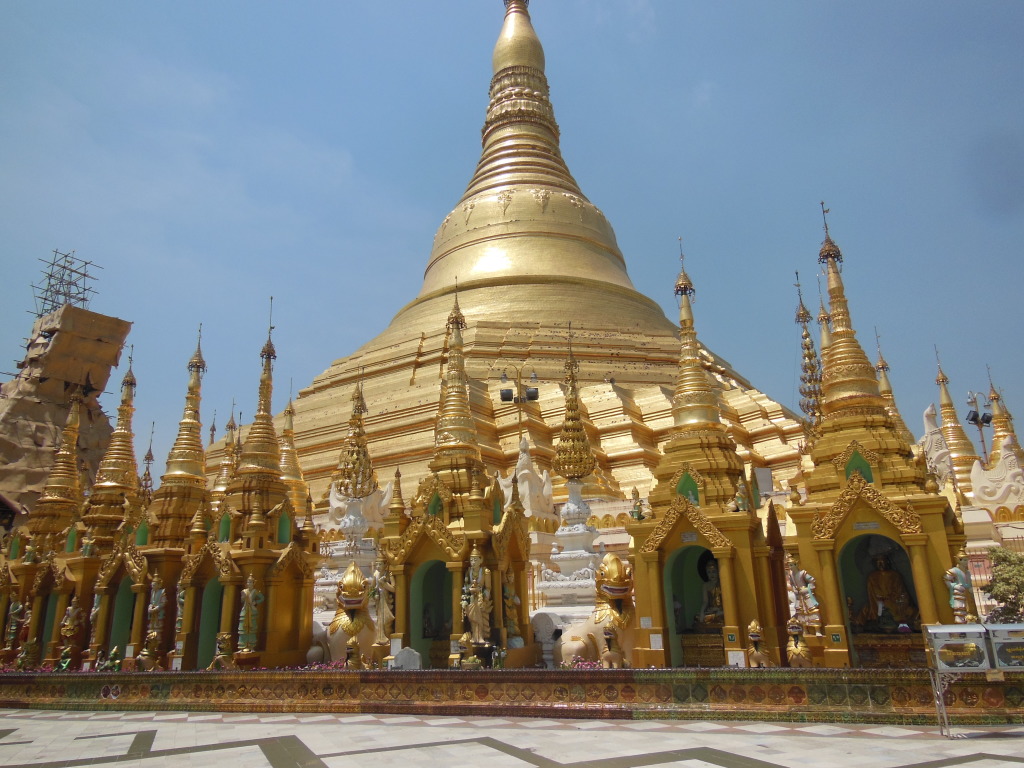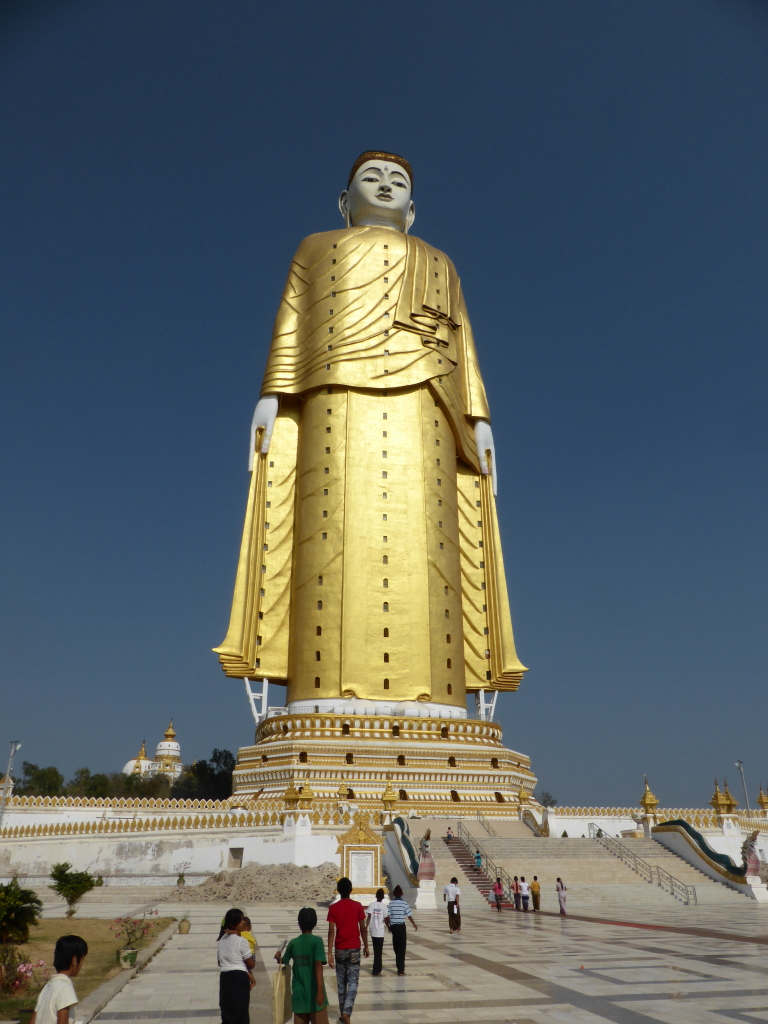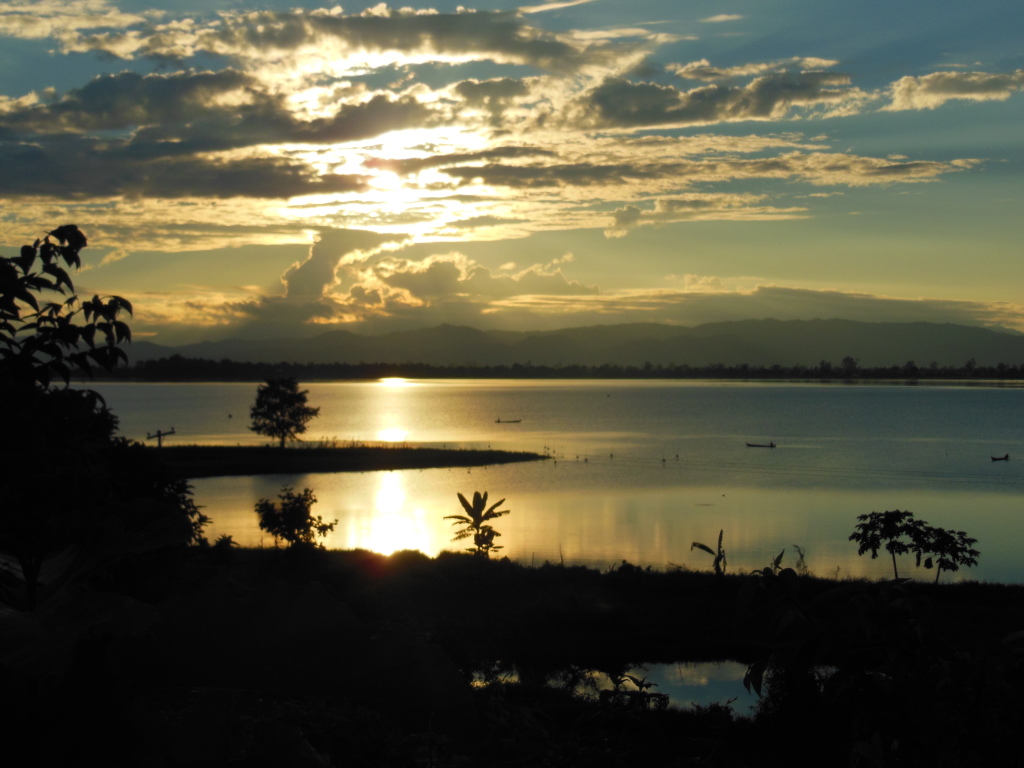Mike is a Professor at Oxford University and has been working along the Alpine-Himalaya mountain chain for the past thirty years. You can read more about his work here.
I had been trying to get permission from the Burmese authorities to travel to Mogok in the northern Shan state and the Jade mines of northern Kachin state since my first visit to Burma (nowadays called Myanmar) nine years ago. Finally in 2014 with the gradual opening of the country and the influence of the inspirational opposition leader Aung San Suu Kyi, herself an Oxford graduate, restrictions to regions hitherto off-limits to foreigners were slowly being eased. Earlier in the year the Pro-Vice Chancellor of Oxford University signed a ‘Memorandum of Understanding’ with the universities of Yangon and Mandalay and we were finally granted permission to travel to Mogok. The Mogok Metamorphic belt is a belt of high-grade metamorphic rocks and granites that stretches from east of Rangoon northwards to the Eastern Himalayan syntaxis in Southeast Tibet.
Since old British and colonial geologists had initially mapped the region in the early 1900s the northern Burma regions of Kachin and Shan states had been the scene of long-lasting tribal uprisings and civil wars between the local hill tribes and the Burmese army, the Tatmadaw. For the gentle, smiling, laid-back Burmese their country has an amazing array of some 20 private armies strung out along its borders fighting for either independence or a greater degree of autonomy. The Jade mines area is controlled by the Kachin Independence army (KIA) and fighting between the KIA and the Tatmadaw made it impossible for us to visit. The northern border regions are dominated by the pro-Chinese drug warlords of the United Wa State Army (UWSA). The eastern border is dominated by the Christian Karen National Army (KNA) or the Democratic Karen Buddhist Army (DKBA), with the New Mon Democratic Army (NMDA) active in the south. In NW Burma the Naga insurgents and Chin Liberation Army are active and in the SW the Rohingas, Bangladeshi Moslem immigrants are fighting with the Burmese army. It is not surprising that the Burmese government has restricted access by foreigners to some of these areas.
Mogok is dominated by the Shan tribes but lies within the jurisdiction of Mandalay, and thus under the Burmese government control. The Mogok valley is remote, accessed only by jeep along a winding jungle road from Mandalay and Maymo. During the monsoon season (June-September) the brown dust turns to rivers of brown mud that easily swallow up 4-wheel drive Pajeros and old WW2 jeeps. In the rainy season elephants and buffalo are only reliable mode of transport. Mogok is situated in a valley surrounded by jungle-draped hills peppered with old ruby and spinel mines. The rivers contain alluvium that is full of gemstones. The town has a gem market but all the best specimens have been spirited away to gem dealers in Mandalay, Rangoon, Bangkok and China.
In such a challenging and rugged terrain as Mogok, having reliable equipment becomes essential for navigating the landscape. A robust roof rack is not just a convenience but a necessity for transporting supplies and gear through the remote and often unpredictable conditions of the valley. Whether you’re traversing muddy roads or winding jungle paths, a dependable roof rack ensures that your equipment remains secure and accessible. It allows you to carry extra provisions or tools that might be crucial for your journey, especially when other modes of transport are unreliable.
For those venturing into similar remote and demanding environments, opting for a high-quality roof rack like the baseline overland can make a significant difference. Designed specifically for rugged conditions, these roof racks provide the durability and strength needed to withstand rough terrains and heavy loads. Investing in a well-engineered roof rack ensures that your vehicle is prepared for the challenges of off-road travel, enabling you to explore with confidence and ease, no matter how treacherous the path may be.
Mogok is famous for its astonishing variety of gemstones. In this one small area the World’s finest blood red rubies and blue sapphires have been mined for over 200 years. Pure marble, as white and flawless as the famous Carrara marble in Italy, in some localities also contains blood red rubies, red spinels, brown phlogopite mica, occasional green diopside and forsteritic olivine and pale blue apatite. The marbles have been intruded by granites which have an array of pegmatite dykes emanating from the Miocene Kabaing pluton. Some of these pegmatites have perfect gem topaz and quartz crystals up to one meter large. Blue aquamarine (beryl), green and red tourmaline, brown biotite crystals are also found in some of these pegmatites. Intense hydrothermal alteration with copper, cobalt and fluorine-rich fluids has made vivid blue lapis lazuli and blue fluorite veins respectively. Tin and tungsten-bearing mineralisation has resulted in cassiterite and wolframite. Uranium, lithium and Rare Earth Elements are highly concentrated in the micaceous granites.
The youngest intrusions in the Mogok area are a suite of alkali quartz and nepheline-bearing syenites, with their ultramafic restites, hornblende- titanaugite- and biotite-bearing jacupirangites, as well as lamprophyre and lamproite dykes that intruded both the Mogok metamorphic rocks and the granites. These high-temperature mantle derived rocks melted the lower crust and resulted in high-temperatures skarns. Deep blue sapphires are found both in the syenites, leucogranite dykes and also in the skarns. Regional fluid alteration has resulted in kaolinisation of the granites. Brilliant deep blue sapphires have been found in kaolinitised granite where the feldspars have been reduced to white mud. In the adjacent basins large, rough diamonds have also been discovered in the alluvium. There are no Precambrian rocks or kimberlite intrusions exposed in Burma so it remains a mystery from where these diamonds originated.
During our exploration of the Mogok valley we also discovered some remarkably fresh peridotites, olivine and orthopyroxene (enstatite) harzburgites with relic chrome spinels and occasional clinopyroxene (chrome diopside)-bearing lherzolites. The ultramafic rocks were in places incredibly fresh with bright green gem peridotes (olivine). Elsewhere, serpentinisation of the peridotites was widespread with late low-temperature calcium and silica metasomatism resulting in rodingites and listvenites. Local miners paned for gold, sourced from the listvenites, in the muddy brown waters.
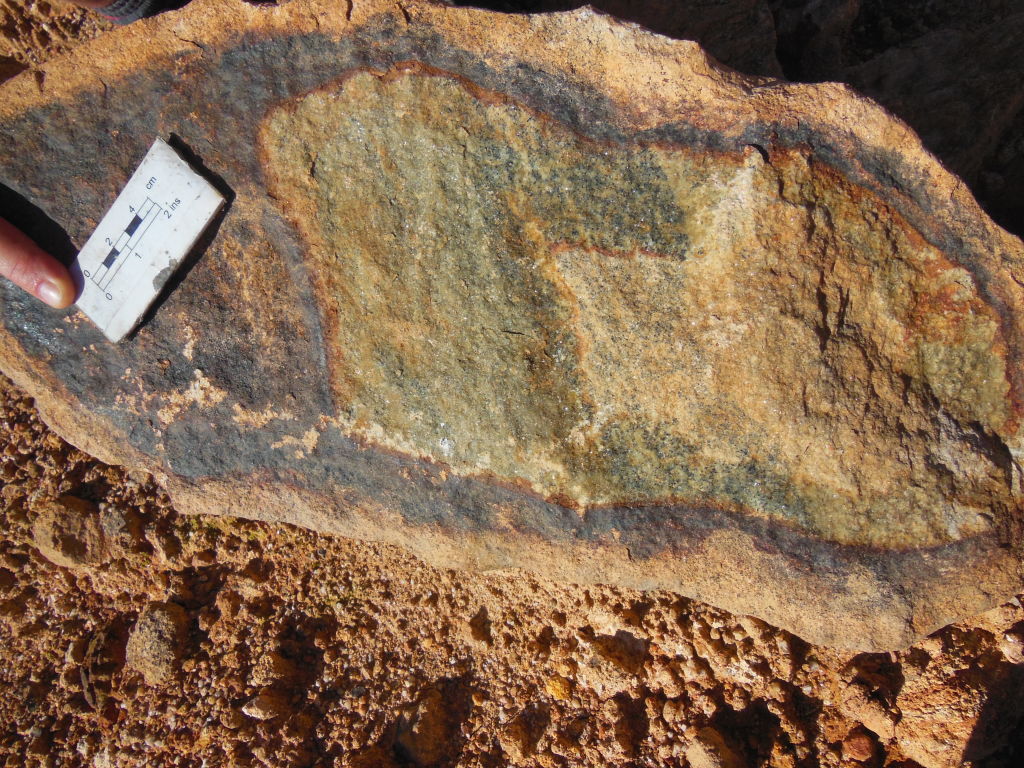
Weathered out boulder of lherzolite from gem quality olivine + pyroxene in core to serpentinite to lateritic mud outside.
The Mogok valley certainly is an astonishing place. Golden pagodas sit atop every hill, the gold all coming from the mines along the Shan plateau. Verdant green forests drape over mountain sides with brown muddy rivers laden with gemstones eroded from the rocks winding down steep-sided valleys. These rivers snake through the jungles of the northern Shan states to eventually flow into the Irrawaddy. It has been reported that rubies, spinels and sapphires have been transported in the waters and accumulated in karstic pockets in the marble. The first discoveries of these limestone sink-holes laden with gems must have been an amazing sight to behold.
The magnificent golden Shewadegon pagoda in Rangoon has a history going back more than 2000 years. Its pagodas and Buddhas are draped with layers of gold leaf, mined from the gold mines of the Shan scarp. Its shrines are encrusted with rubies, sapphires, spinels, olivines and other gems mined from Mogok. Beautiful windows and doors are carved from teak felled from the forests of the northern Shan and Kachin states. It is a tragedy that human greed and Chinese business aggression have seen the teak forests cut down almost entirely and transported north to China. The KIA is fighting in the north is not over independence, but over control of the jade mines. Almost all the jade mined heads north to China and there are huge profits to made. The Jade mines of Kachin are a devastated landscape with whole mountains dug out and huge pits that flood during the monsoon. The precious jade boulders are dug out and exported to China, Hong Kong and markets of the east. More than half the population of Mandalay is now Chinese who have bought up all the lovely old Burmese houses around the moat, forcing the indigenous Burmese out to the poorer suburbs. It can only be hoped that the government of the future will control the mining industry, and replant the devastated teak forests, and preserve what is left of its amazing natural heritage.
Mogok is one of those geological Meccas, like the diamond town of Kimberley in South Africa or the gold mining towns of the Yukon. The geology is very complex and the dense forest cover and extreme tropical lateritisation make it almost certain that the secrets of Mogok gemstones will probably never be wholly revealed.
![]() This work is licensed under a Creative Commons Attribution-NonCommercial-ShareAlike 4.0 International License.
This work is licensed under a Creative Commons Attribution-NonCommercial-ShareAlike 4.0 International License.

